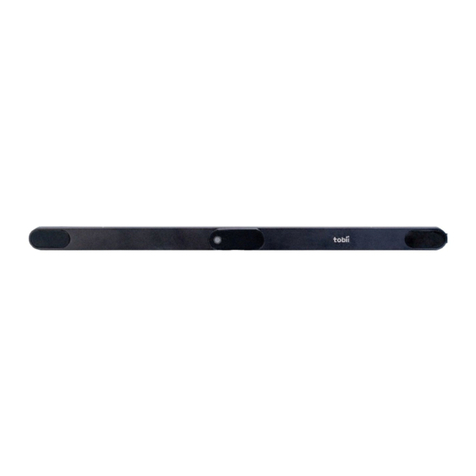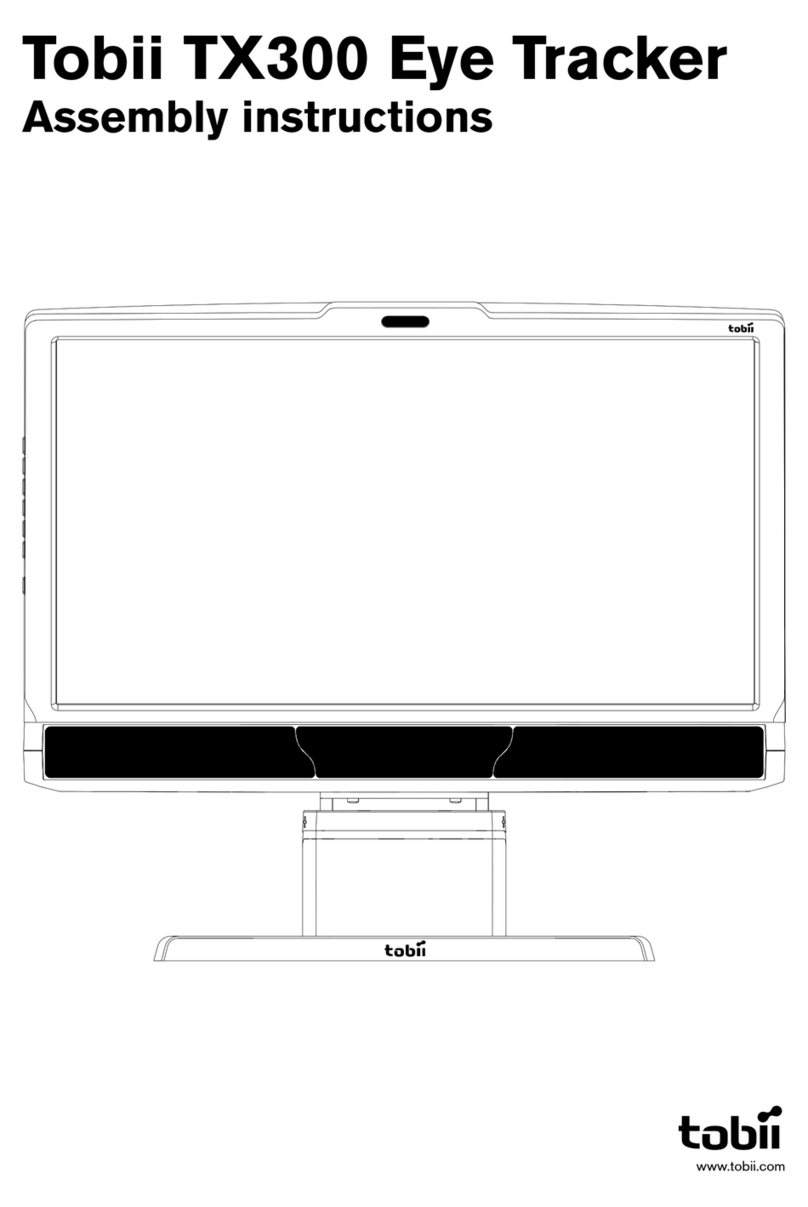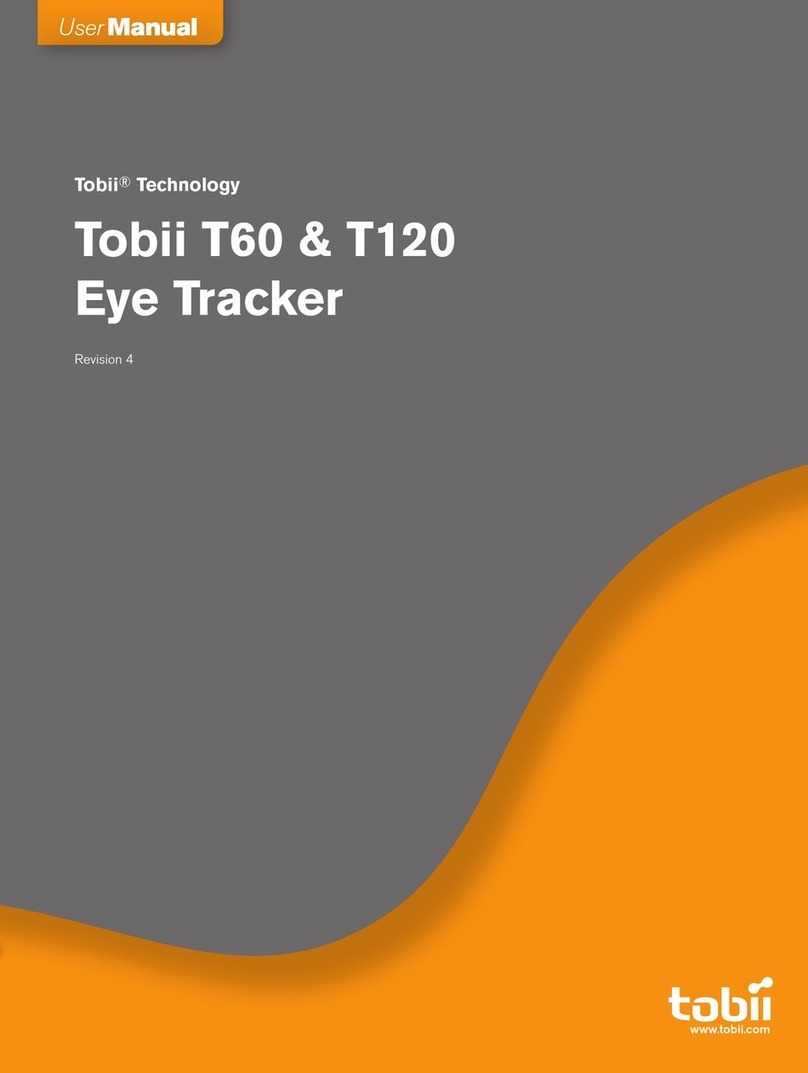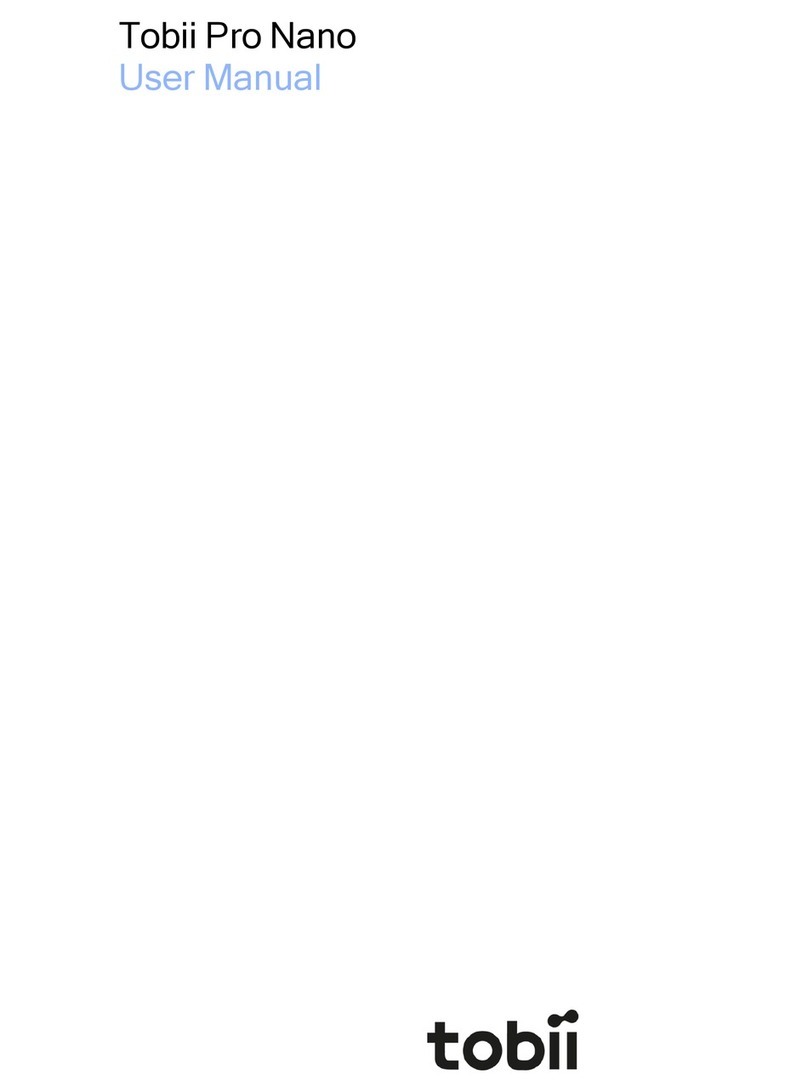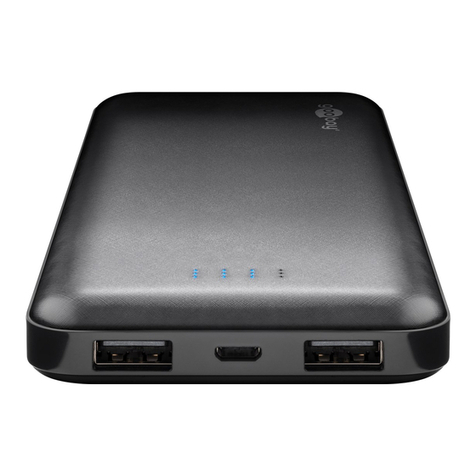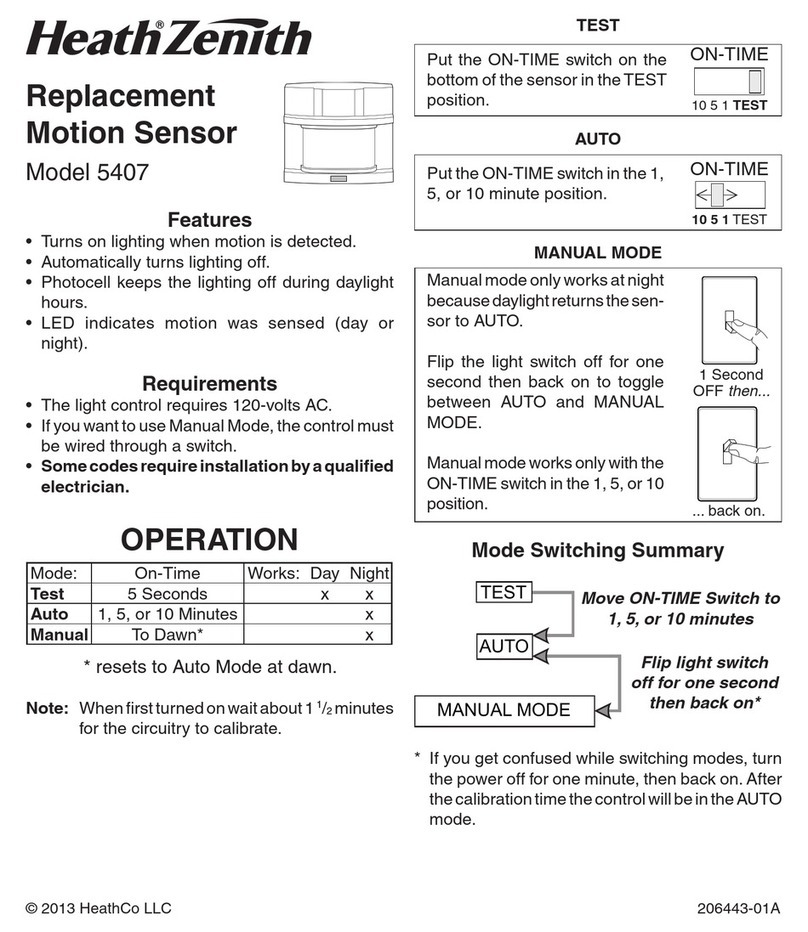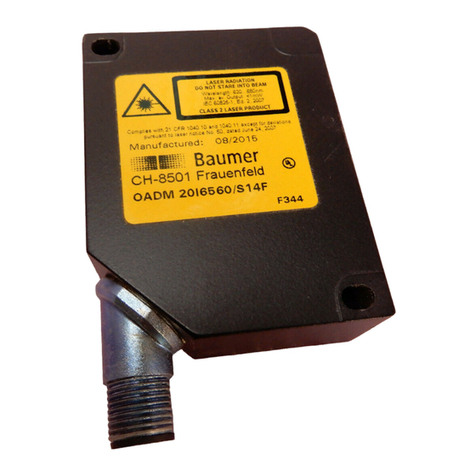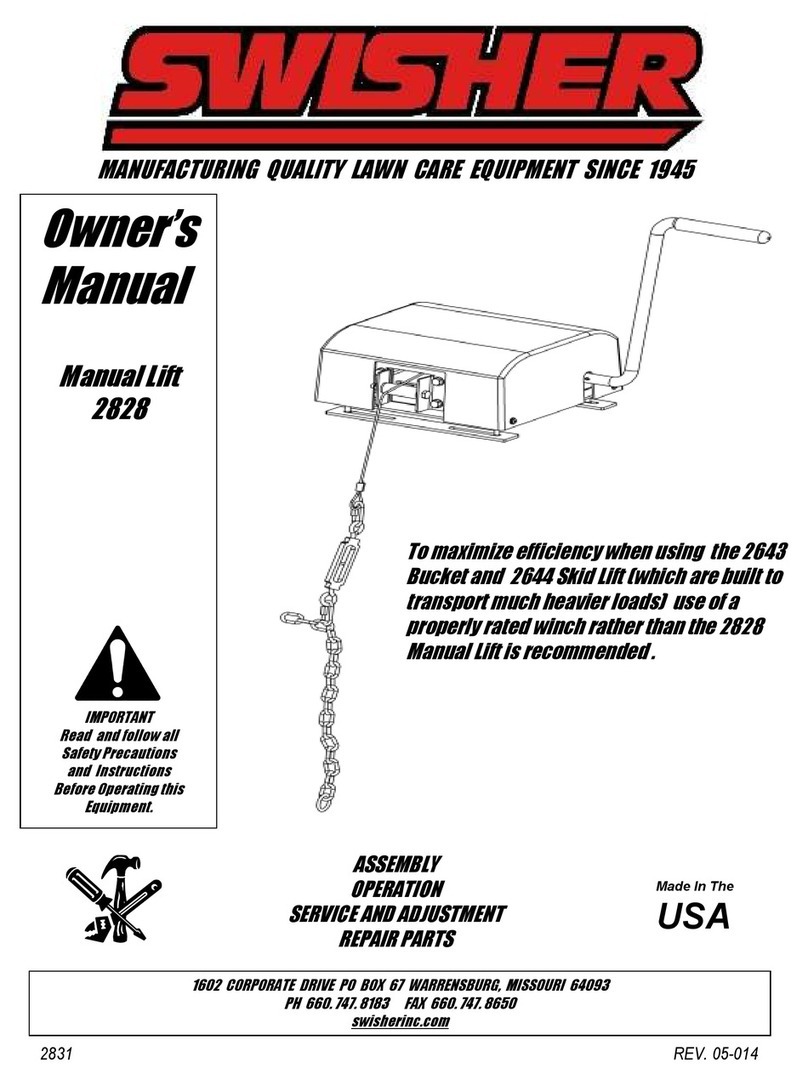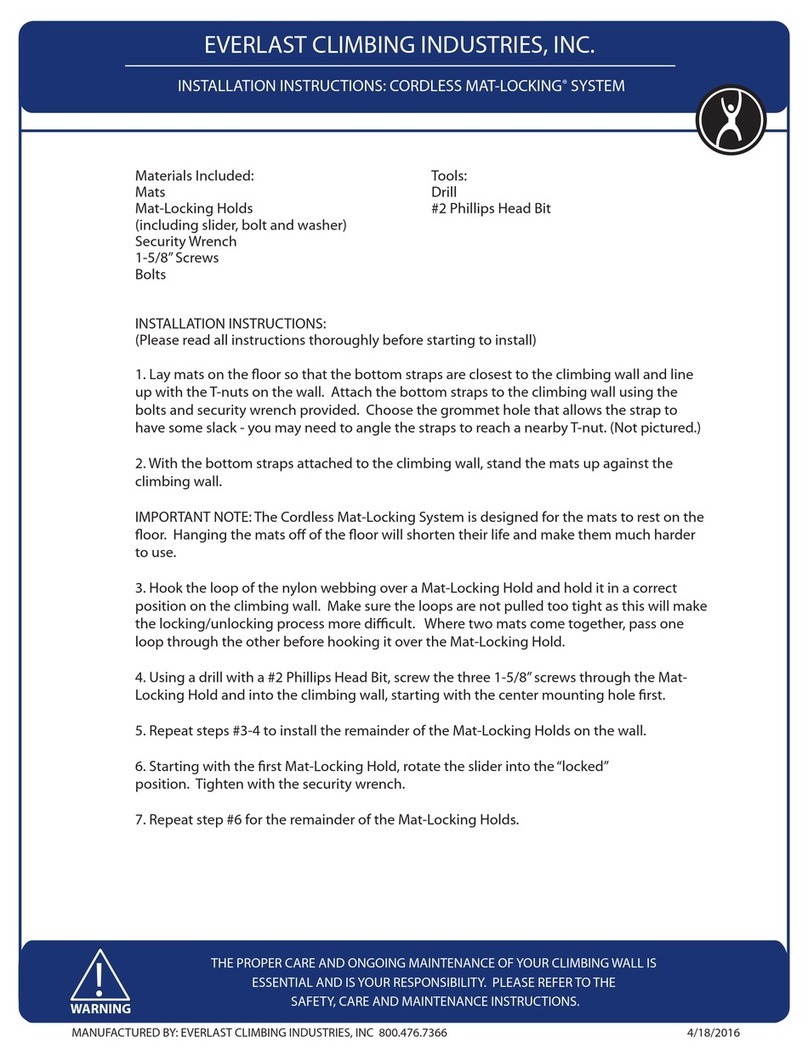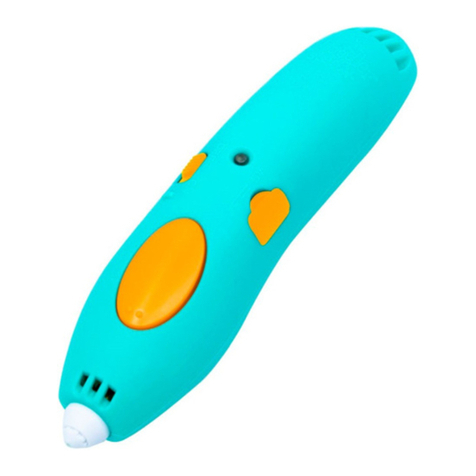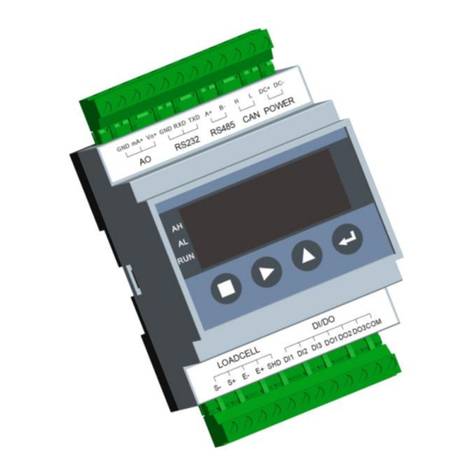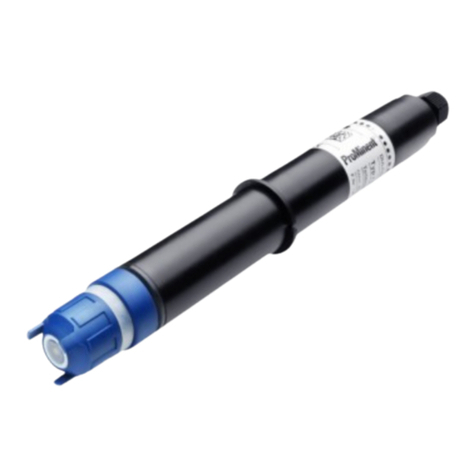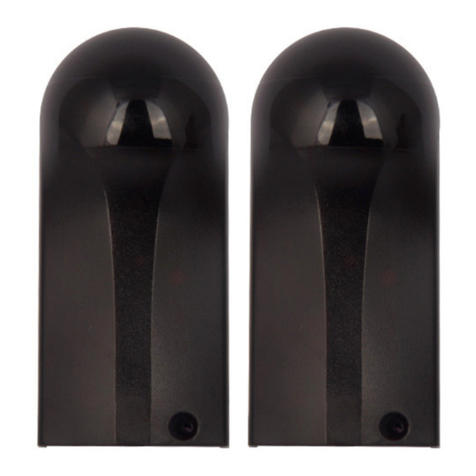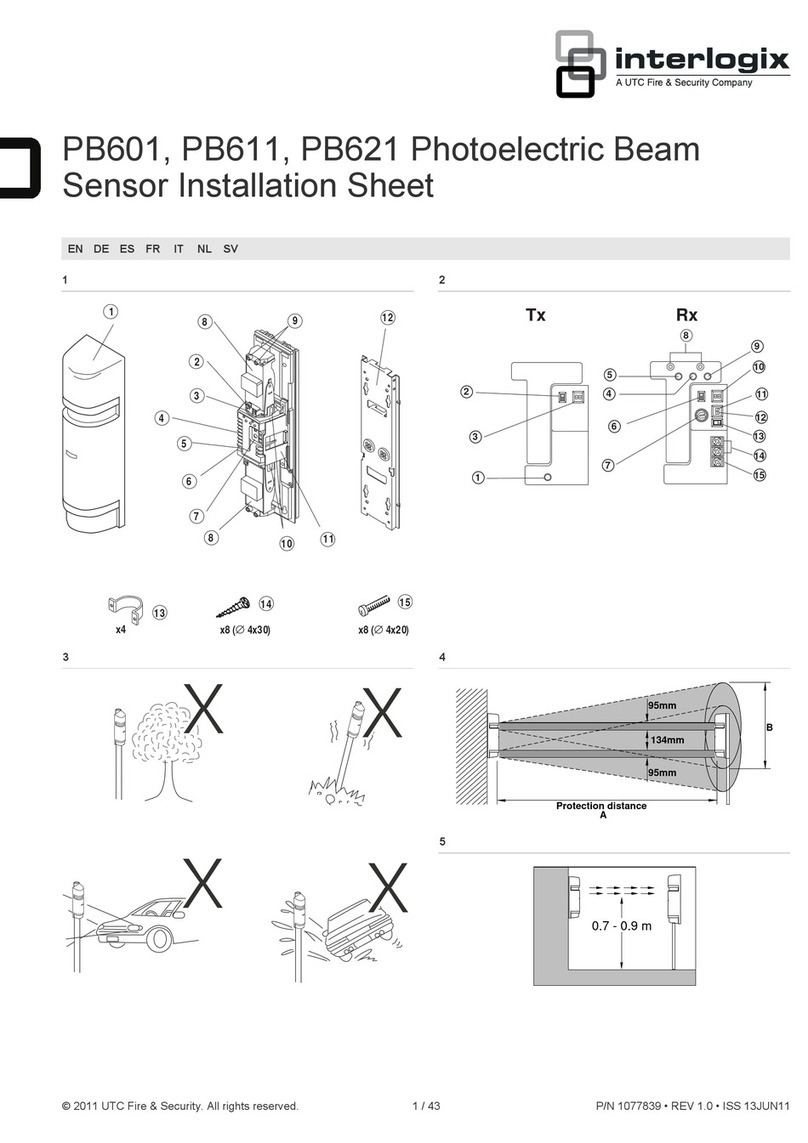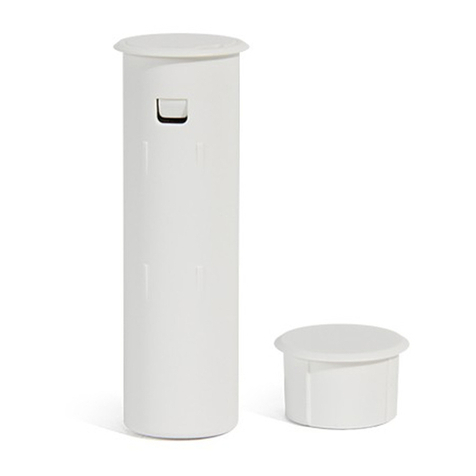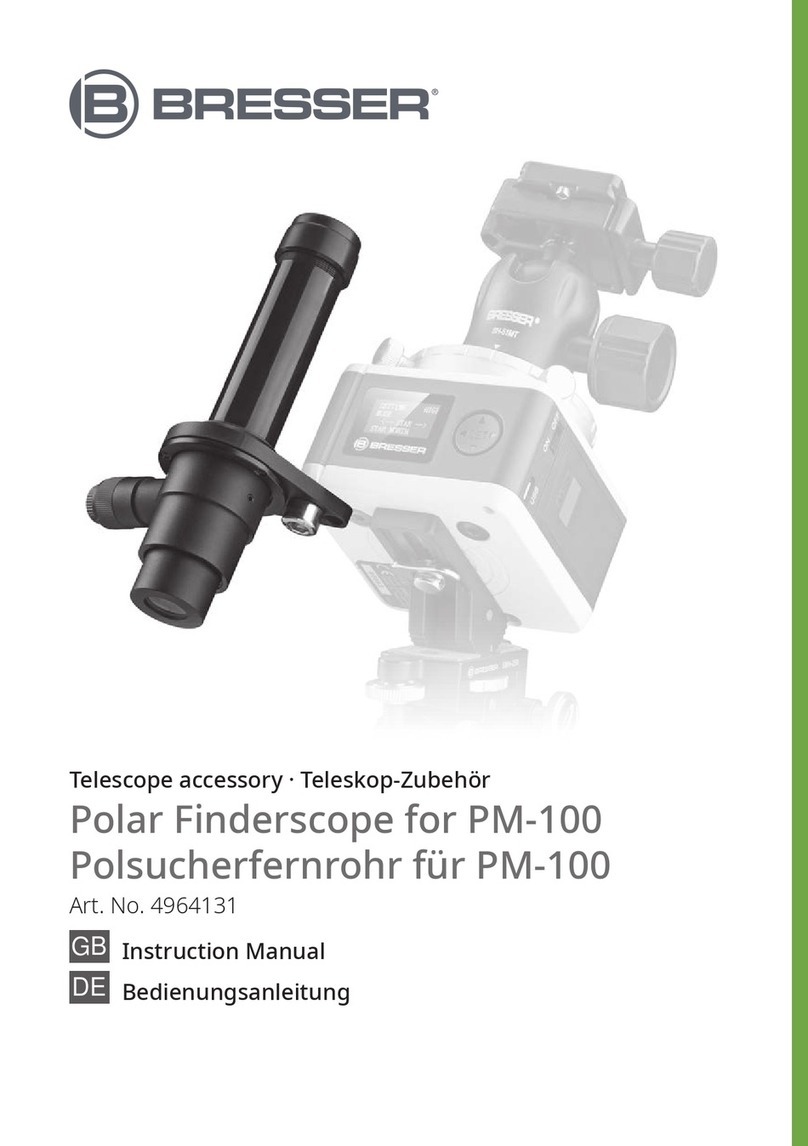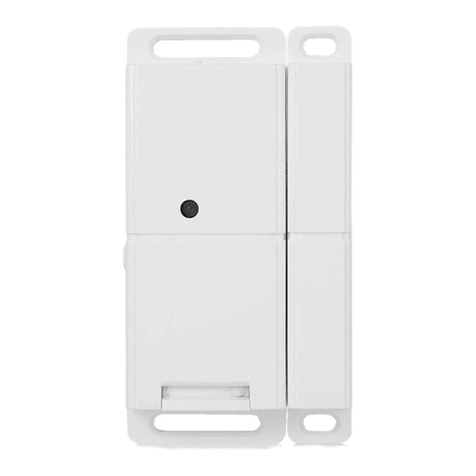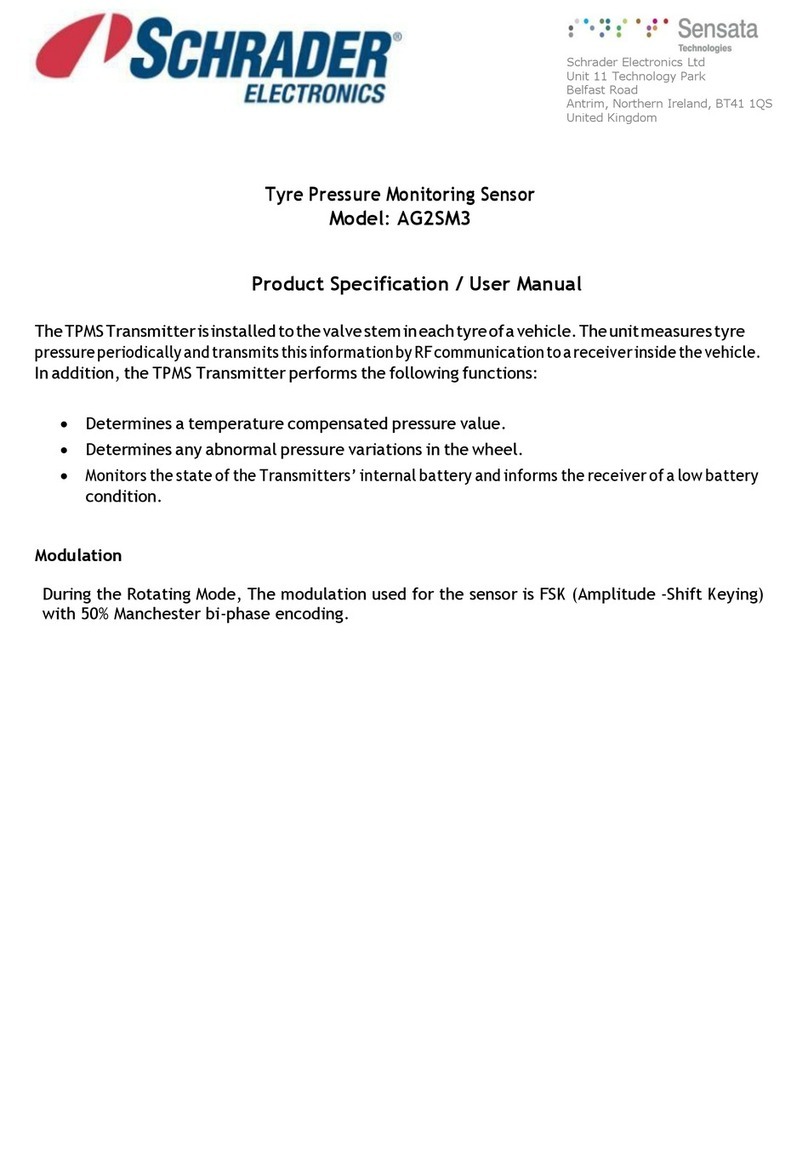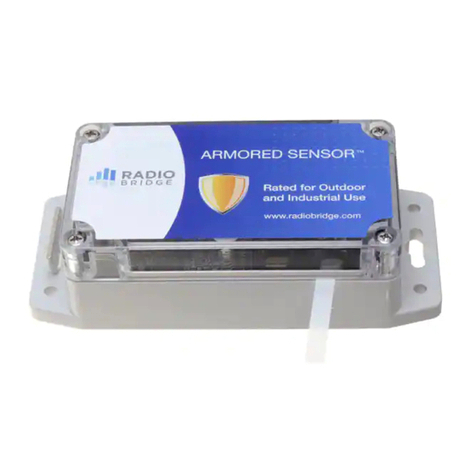Tobii X2-30 Eye Tracker Compact Edition Technical specifications

Product Description
Tobii X2-30 Eye Tracker Compact Edition
Tobii X2-30 Eye Tracker Wide Edition
Tobii X2-60 Eye Tracker Compact Edition
Tobii X2-60 Eye Tracker Wide Edition

Product Description
Manual Version 1.0
01/2013
All rights reserved.
© Tobii Technology A
The information contained in this document is proprietary to
Tobii Technology. Any reproduction in part or whole without
prior written authorization by Tobii Technology is prohibited.
Products that are referred to in this document may be either
trademarks and/or registered trademarks of the respective
owners. The publisher and the author make no claim to these
trademarks.
While every precaution has been taken in the preparation of
this document, the publisher and the author assume no
responsibility for errors or omissions, or for damages resulting
from the use of information contained in this document or
from the use of programs and source code that may
accompany it. In no event shall the publisher and the author
be liable for any loss of profit or any other commercial
damage caused or alleged to have been caused directly or
indirectly by this document.
Content subject to change without notice.
Please check Tobii web site www.tobii.com for updated
versions of this manual.

Table of Contents
11 IInnttrroodduuccttiioonn .................................................................................................................................................................................................................................................................... 11
1.1 Overview...............................................................................................................................1
1.2 ApplicationsAreas..................................................................................................................2
1.3 asic Operating Principles ......................................................................................................2
22 TTeecchhnniiccaall SSppeecciiffiiccaattiioonnss .......................................................................................................................................................................................................................... 33
2.1 Tobii X2–30 Eye Trackers ........................................................................................................3
2.2 Tobii X2–60 Eye Trackers ........................................................................................................5
33 DDaattaa SSaammppllee OOuuttppuutt ........................................................................................................................................................................................................................................ 88
44 EEyyee TTrraacckkiinngg SSeettuuppss........................................................................................................................................................................................................................................ 99
4.1 Typical Tobii X2 Eye Tracker Screen Setups ..............................................................................9
4.1.1 Local Live Viewer ....................................................................................................9
4.2 Typical Tobii X2 Eye Tracker Physical Object Setup ..................................................................10
4.2.1 External video stimulus recording.............................................................................10
AAppppeennddiixx AA::GGlloossssaarryy..................................................................................................................................................................................................................................................1111
AAppppeennddiixx ::AAccccuurraaccyy aanndd PPrreecciissiioonn MMeeaassuurreemmeennttss..............................................................................................................................................1122
:1 Gaze Precision.....................................................................................................................12
:2 Gaze Accuracy ....................................................................................................................12
AAppppeennddiixx CC::CCoommpplliiaannccee IInnffoorrmmaattiioonn aanndd WWaarrnniinnggss..............................................................................................................................................1133
C:1 FCC Statement....................................................................................................................13
C:2 Industry Canada Statement....................................................................................................13
C:3 Standards ...........................................................................................................................13
C:4 Mounting Warning................................................................................................................13
C:5 Infrared Warning ..................................................................................................................14


1 Introduction
1.1 Overview
This document describes the features and functionality of the Tobii X2 Eye Trackers. The X2 Eye Tracker is a stand alone eye
tracker that can be used in various setups by attaching it to monitors, laptops or for performing eye tracking on physical objects.
The eye tracker requires some assembly before first time use and after transport.
The Tobii X2 Eye Tracker is an unobtrusive eye tracker for detailed research of natural behavior. Its large head movement box al-
lows the subject to move during recording while maintaining accuracy and precision. The Tobii X2 Eye Trackers offer maximum
flexibility with numerous software and stimuli set-up options.
The X2-30 and X2–60 Eye Trackers come in a Compact and in a Wide Edition, to meet you’re your specific needs:
•The CCoommppaacctt EEddiittiioonn is a smaller version of the eye tracker, measuring 184 mm (7.2’’) in length. It enables your portable
eye tracking lab or studies that require a small eye tracker to track:
–Laptops and smaller PC monitors up to app. 22’’ (up to 31° gaze angle)
–Mobile devices
–Small real-world interfaces
TToobbiiii XX22--3300 EEyyee TTrraacckkeerr CCoommppaacctt EEddiittiioonn mmoouunntteedd oonn aa llaappttoopp ((llaappttoopp nnoott iinncclluuddeedd))::
•The WWiiddee EEddiittiioonn, measuring 400 mm (15.7ʺ) in length, is designed for studies that require larger gaze angels (up to
37°). It enables studies that involve larger stimuli, being able to track interfaces such as:
–PC monitors up to app. 27’’
–TV screens
–Projections, simulators
–Large real-world interfaces
TToobbiiii XX22--3300 EEyyee TTrraacckkeerr WWiiddee EEddiittiioonn mmoouunntteedd oonn aa mmoonniittoorr ((mmoonniittoorr nnoott iinncclluuddeedd))::
Product Description v.1.0 - en-US 1 Introduction 1

1.2 Applications Areas
The modular system can be used both in screen and real-world test scenarios, making way for a very broad spectrum of studies.
You can mount the eye tracker on a laptop, a PC monitor, an all-in-one PC, or even a tablet. Present your stimuli using a projec-
tion or TV. You can study real-world interfaces like a control panel, an ATM or a store shelf. The supplied mounting solutions sup-
port a variety of study designs.
•TToobbiiii XX22––3300 EEyyee TTrraacckkeerrss —The X2-30 Eye Trackers are designed for studies primarily aimed at determining precisely
where the participants are looking —the gaze point—rather than studying timing, duration of fixations or eye movements
such as saccades, for example.
•TToobbiiii XX22––6600 EEyyee TTrraacckkeerrss —The X2-60 eye tracker is designed for studies aimed at determining precisely where the
participants are looking and for studying and measuring eye fixations and other eye tracking metrics based on these.
1.3 Basic Operating Principles
During tracking, Tobii Eye Trackers use infrared diodes to generate reflection patterns on the corneas of the subject’s eyes.
These reflection patterns, together with other visual data about the subject, are collected by image sensors. Sophisticated image
processing algorithms identify relevant features, including the eyes and the corneal reflection patterns. Complex mathematics is
used to calculate the 3D position of each eyeball, and finally the gaze point on the screen; in other words, where the subject is
looking.
Tobii Eye Trackers are designed for use in indoor office environments.
21 Introduction Product Description v.1.0 - en-US

2 Technical Specifications
The characteristics of an eye tracker can be described in terms of gaze accuracy and gaze precision. Accuracy describes the an-
gular average distance from the actual gaze point to the one measured by the eye tracker. Gaze precision describes the spatial
variation between successive samples collected when the subject fixates at a specific point on a stimuli. More information re-
garding the accuracy and precision measurements can be found in
Appendix : Accuracy and Precision Measurements
. A glos-
sary can be found at
Appendix A: Glossary
.
2.1 Tobii X2–3 Eye Trackers
Table 2.1 Gaze Accuracy (Preliminary)
GGaazzee aaccccuurraaccyy1
TToobbiiii XX22--3300 EEyyee TTrraacckkeerr CCoommppaacctt EEddiittiioonn
((ffiirrmmwwaarree vveerrssiioonn 00..77..33))
TToobbiiii XX22--3300 EEyyee TTrraacckkeerr WWiiddee EEddiittiioonn
((ffiirrmmwwaarree vveerrssiioonn —— ppeennddiinngg))
iinnooccuullaarr MMoonnooccuullaarr iinnooccuullaarr MMoonnooccuullaarr
At ideal conditions 0.4 0.5 0.4 0.5
At 25° gaze angle 0.5 0.6 0.5 0.6
At 30° gaze angle 0.5 0.6 0.5 0.6
At 35° gaze angle N/A N/A Pending Pending
At 1 lux Pending Pending Pending Pending
At 300 lux 0.4 0.5 0.4 0.5
At 600 lux Pending Pending Pending Pending
At 1000 lux Pending Pending Pending Pending
White stimuli background Pending Pending Pending Pending
1. Accuracy under ideal conditions is measured in the centre of the head movement box with the subject fixed in a chinrest. Data is collected immediately after calibration, in a controlled laboratory
environment with constant illumination, with 9 stimuli points at gaze angles of ≤18º.
AAccccuurraaccyy aatt iiddeeaall ccoonnddiittiioonnss —— XX22––3300 CCoommppaacctt EEddiittiioonn ((PPrreelliimmiinnaarryy))
AAccccuurraaccyy aatt vvaarryyiinngg ddiissttaanncceess —— XX22––3300 CCoommppaacctt EEddiittiioonn ((PPrreelliimmiinnaarryy))
Product Description v.1.0 - en-US 2 Technical Specifications 3

Table 2.2 Gaze Precision (Preliminary)
GGaazzee pprreecciissiioonn
TToobbiiii XX22--3300 EEyyee TTrraacckkeerr CCoomm--
ppaacctt EEddiittiioonn
TToobbiiii XX22--3300 EEyyee TTrraacckkeerr WWiiddee
EEddiittiioonn
iinnooccuullaarr MMoonnooccuullaarr iinnooccuullaarr MMoonnooccuullaarr
Artificial Eye With Stampe filter 21Pending Pending Pending Pending
Without filter Pending Pending Pending Pending
Human Eye With Stampe filter 2 Pending Pending Pending Pending
Without filter 0.32 0.43 0.32 0.43
1. Stampe ( ehavior Research Methods, Instruments & Computers, 1993, 25 (2), pp.137-142) describes a noise reduction filter commonly used for eye tracking data. In these measurements, the
Stampe stage 2 algorithm has been applied.
Table 2.3 Eye Tracking Specifications (Preliminary)
TToobbiiii XX22--3300 EEyyee TTrraacckkeerr CCoomm--
ppaacctt EEddiittiioonn
TToobbiiii XX22--3300 EEyyee TTrraacckkeerr WWiiddee
EEddiittiioonn
SSaammpplliinngg rraattee130 Hz
(std. deviation ~ 3Hz)
30 Hz
(std. deviation ~ 3Hz)
TToottaall ssyysstteemm llaatteennccyy 48–67 ms 48-67 ms
TTiimmee ttoo ttrraacckkiinngg rreeccoovveerryy For blinks: immediate For blinks: immediate
HHeeaadd mmoovveemmeenntt2Freedom of head
movement at 70 cm
(width x height)
50 x 36 cm (20 x 14ʺ) 50 x 36 cm (20 x 14ʺ)
Operating distance
(eye tracker to subject) 40–90 cm (15.7–33.5ʺ) 50–100 cm (20–39ʺ)
RReeccoommmmeennddeedd ssccrreeeenn ssiizzee up to 22ʺup to 27ʺ
DDaattaa ssaammppllee oouuttppuutt Timestamp, eye position, gaze point,
pupil diameter, validity code
Timestamp, eye position, gaze point,
pupil diameter, validity code
1. As the Tobii X2-30 Eye Trackers have a variable and low sampling rate, they are not suitable for detailed studies of the onset or durations of fixations, saccades or other measures requiring high
temporal and stable sampling precision.
2. Freedom of head movement describes the volume in front of the tracker in which the user must have at least one of the eyes. The numbers are specified parallel/orthogonal to screen surface, as-
suming eye tracker is at 20 degree angle to screen.
Table 2. Eye Tracking Units (Preliminary)
TToobbiiii XX22--3300 EEyyee TTrraacckkeerr CCoommppaacctt
EEddiittiioonn
TToobbiiii XX22--3300 EEyyee TTrraacckkeerr WWiiddee EEddiittiioonn
EEyyee ttrraacckkeerr pprroocceessssiinngg uunniitt Embedded, no external eye tracking host
necessary
Embedded, no external eye tracking host
necessary
CCoonnnneeccttoorrss US 2.0 US 2.0
WWeeiigghhtt 200 g (7.1 oz) 250 g (8.8 oz)
SSiizzee 184*28*23 mm (7.2 * 1.1* 0.9’’) 400*28*23 mm (15.7 * 1.1* 0.9’’)
MMoouunnttiinngg ssoolluuttiioonnss Adhesive Mounting brackets for monitors,
laptops and tablets. Desk Stand Acces-
sory package for Tripod and desks
Adhesive Mounting brackets for moni-
tors, laptops and tablets. Desk Stand Ac-
cessory package for Tripod and desks
42 Technical Specifications Product Description v.1.0 - en-US

Table 2.5 Hardware package content (Preliminary)
TToobbiiii XX22--3300 EEyyee TTrraacckkeerr CCoommppaacctt EEddiittiioonn HHaarrddwwaarree
PPaacckkaaggee
TToobbiiii XX22--3300 EEyyee TTrraacckkeerr WWiiddee EEddiittiioonn HHaarrddwwaarree
PPaacckkaaggee
Tobii X2-30 Eye Tracker Compact Edition Tobii X2-30 Eye Tracker Wide Edition
3 x Adhesive mounting bracket kit (each kit contains 3 brack-
ets for different screen depths) for permanent installation.
6 x Adhesive mounting bracket kit (each kit contains 3 brack-
ets for different screen depths) for permanent installation.
Safety Instructions Safety Instructions
Installation Guide Installation Guide
Mounting tape kit Mounting tape kit
US extension cable N/A
Zipper bag Zipper bag
Tobii X2-30 Eye Tracker US memory stick containing the
Tobii Eye Tracker Installer.
Tobii X2-30 Eye Tracker US memory stick containing the
Tobii Eye Tracker Installer.
Tobii X2-30 Eye Tracker user manual Tobii X2-30 Eye Tracker user manual
N/A X2 Wide Edition mounting aid
Table 2.6 Accessories (Preliminary)
TToobbiiii XX22--3300 EEyyee TTrraacckkeerr CCoommppaacctt EEddiittiioonn TToobbiiii XX22--3300 EEyyee TTrraacckkeerr WWiiddee EEddiittiioonn
Tobii X2 Eye Tracker laptop case Tobii X2 Eye Tracker laptop case
Tobii X2 Eye Tracker desk stand package:
•Tobii X2 Eye Tracker desk stand kit
•Digital angle gauge
•Measuring tape
Tobii X2 Eye Tracker desk stand package:
•Tobii X2 Eye Tracker desk stand kit
•Digital angle gauge
•Measuring tape
2.2 Tobii X2–6 Eye Trackers
Table 2.1 Gaze Accuracy (Preliminary)
GGaazzee aaccccuurraaccyy1
TToobbiiii XX22--6600 EEyyee TTrraacckkeerr CCoommppaacctt EEddiittiioonn
((ffiirrmmwwaarree vveerrssiioonn —— ppeennddiinngg))
TToobbiiii XX22--6600 EEyyee TTrraacckkeerr WWiiddee EEddiittiioonn
((ffiirrmmwwaarree vveerrssiioonn —— ppeennddiinngg))
iinnooccuullaarr MMoonnooccuullaarr iinnooccuullaarr MMoonnooccuullaarr
At ideal conditions 0.4 0.5 0.4 0.5
At 25° gaze angle 0.5 0.6 0.5 0.6
At 30° gaze angle 0.5 0.6 0.5 0.6
At 35° gaze angle N/A N/A Pending Pending
At 1 lux Pending Pending Pending Pending
At 300 lux 0.4 0.5 0.4 0.5
At 600 lux Pending Pending Pending Pending
At 1000 lux Pending Pending Pending Pending
White stimuli background Pending Pending Pending Pending
1. Accuracy under ideal conditions is measured in the centre of the head movement box with the subject fixed in a chinrest. Data is collected immediately after calibration, in a controlled laboratory
environment with constant illumination, with 9 stimuli points at gaze angles of ≤18º.
Product Description v.1.0 - en-US 2 Technical Specifications 5

Table 2.2 Gaze Precision (Preliminary)
GGaazzee pprreecciissiioonn
TToobbiiii XX22--6600 EEyyee TTrraacckkeerr CCoomm--
ppaacctt EEddiittiioonn
TToobbiiii XX22--6600 EEyyee TTrraacckkeerr WWiiddee
EEddiittiioonn
iinnooccuullaarr MMoonnooccuullaarr iinnooccuullaarr MMoonnooccuullaarr
Artificial Eye With Stampe filter 21Pending Pending Pending Pending
Without filter Pending Pending Pending Pending
Human Eye With Stampe filter 2 Pending Pending Pending Pending
Without filter 0.32 0.43 0.32 0.43
1. Stampe ( ehavior Research Methods, Instruments & Computers, 1993, 25 (2), pp.137-142) describes a noise reduction filter commonly used for eye tracking data. In these measurements, the
Stampe stage 2 algorithm has been applied.
Table 2.3 Eye Tracking Specifications (Preliminary)
TToobbiiii XX22--6600 EEyyee TTrraacckkeerr CCoomm--
ppaacctt EEddiittiioonn
TToobbiiii XX22--6600 EEyyee TTrraacckkeerr WWiiddee
EEddiittiioonn
SSaammpplliinngg rraattee 60 Hz
(std. deviation approx. 0.1Hz)
60 Hz
(std. deviation approx. 0.1Hz)
TToottaall ssyysstteemm llaatteennccyy 48–67 ms 48-67 ms
TTiimmee ttoo ttrraacckkiinngg rreeccoovveerryy For blinks: immediate For blinks: immediate
HHeeaadd mmoovveemmeenntt1Freedom of head move-
ment at 70 cm (width x
height)
50 x 36 cm (20 x 14ʺ) 50 x 36 cm (20 x 14ʺ)
Operating distance
(eye tracker to subject) 45–90 cm (15.7–33.5ʺ) 50–100 cm (20–39ʺ)
RReeccoommmmeennddeedd ssccrreeeenn ssiizzee up to 22ʺup to 27ʺ
DDaattaa ssaammppllee oouuttppuutt Timestamp, eye position, gaze point,
pupil diameter, validity code
Timestamp, eye position, gaze point,
pupil diameter, validity code
1. Freedom of head movement describes the volume in front of the tracker in which the user must have at least one of the eyes. The numbers are specified parallel/orthogonal to screen surface, as-
suming eye tracker is at 20 degree angle to screen.
Table 2. Eye Tracking Units (Preliminary)
TToobbiiii XX22--6600 EEyyee TTrraacckkeerr CCoommppaacctt EEddiittiioonn TToobbiiii XX22--6600 EEyyee TTrraacckkeerr WWiiddee EEddiittiioonn
EEyyee ttrraacckkeerr pprroocceessssiinngg
uunniitt
Tobii X2-60 Eye Tracker external processing
unit
Tobii X2-60 Eye Tracker external processing
unit
CCoonnnneeccttoorrss US 2.0 US 2.0
WWeeiigghhtt 200 g (7.1 oz) 250 g (8.8 oz)
SSiizzee 184 x 28 x 23 mm (7.2 x 1.1 x 0.9ʺ) 400 x 28 x 23 mm (15.7 x 1.1 x 0.9ʺ)
MMoouunnttiinngg ssoolluuttiioonnss Adhesive Mounting brackets for monitors, lap-
tops and tablets. Desk Stand Accessory pack-
age for Tripod and desks
Adhesive Mounting brackets for monitors,
laptops and tablets. Desk Stand Accessory
package for Tripod and desks
Table 2.5 Tobii X2-60 Eye Tracker external processing unit
CCoonnnneeccttoorrss US 2.0, LAN and power connector
SSiizzee 116.6 x 112 x 39 mm (4.6 x 4.4 x 1.55’’)
WWeeiigghhtt 500 g (17.6 oz)
62 Technical Specifications Product Description v.1.0 - en-US

Table 2.6 Hardware package content (Preliminary)
TToobbiiii XX22--6600 EEyyee TTrraacckkeerr CCoommppaacctt EEddiittiioonn HHaarrddwwaarree
PPaacckkaaggee
TToobbiiii XX22--6600 EEyyee TTrraacckkeerr WWiiddee EEddiittiioonn HHaarrddwwaarree
PPaacckkaaggee
Tobii X2-60 Eye Tracker Compact Edition Tobii X2-60 Eye Tracker Wide Edition
3 x Adhesive mounting bracket kit (each kit contains 3 brack-
ets for different screen depths) for permanent installation.
6 x Adhesive mounting bracket kit (each kit contains 3 brack-
ets for different screen depths) for permanent installation.
Safety Instructions Safety Instructions
Installation Guide Installation Guide
Mounting tape kit Mounting tape kit
US extension cable N/A
Zipper bag Zipper bag
Tobii X2-60 Eye Tracker US memory stick containing the
Tobii Eye Tracker Installer.
Tobii X2-60 Eye Tracker US memory stick containing the
Tobii Eye Tracker Installer.
Tobii X2-60 Eye Tracker user manual Tobii X2-60 Eye Tracker user manual
Tobii X2-60 Eye Tracker external processing unit Tobii X2-60 Eye Tracker external processing unit
N/A X2 Wide Edition mounting aid
Table 2.7 Accessories (Preliminary)
TToobbiiii XX22--6600 EEyyee TTrraacckkeerr CCoommppaacctt EEddiittiioonn TToobbiiii XX22--6600 EEyyee TTrraacckkeerr WWiiddee EEddiittiioonn
Tobii X2 Eye Tracker laptop case Tobii X2 Eye Tracker laptop case
Tobii X2 Eye Tracker desk stand package:
•Tobii X2 Eye Tracker desk stand kit
•Digital angle gauge
•Measuring tape
Tobii X2 Eye Tracker desk stand package:
•Tobii X2 Eye Tracker desk stand kit
•Digital angle gauge
•Measuring tape
Product Description v.1.0 - en-US 2 Technical Specifications 7

3 Data Sample Output
Different applications can be connected as clients to the eye tracker to, e.g., gather eye gaze data in real-time and perform cali-
brations. Applications that can be used together with the eye tracker include the Tobii Studio™analysis software, third party anal-
ysis products such as E-Prime® or your own custom written software for analysis, gaze-contingent applications or eye control
applications. For more information on how to create your own applications, please refer to the Tobii Software Development Kit
(SDK) product description, version 3.0 or later.
elow is a list of data that can be accessed through the output of the eye tracker. In Tobii Studio™analysis software this data
can be accessed through a Data export function, and easily imported into a spreadsheet for further analysis. Please note that
some of the parameter names differs between what is delivered from the SDK and what is available in the Tobii Studio™data
export.
TTiimmeessttaammpp Timestamp in milliseconds stating the mid-exposure time when the sample was collected by the eye
tracker’s image sensors.
GGaazzeePPooiinnttXXLLeefftt Horizontal screen position of the gaze point for the left eye.
GGaazzeePPooiinnttYYLLeefftt Vertical screen position of the gaze point for the left eye.
CCaammXXLLeefftt Horizontal location of the left pupil in the camera image (0 is left edge, 1 is right edge).
CCaammYYLLeefftt Vertical location of the left pupil in the camera image (0 is top, 1 is bottom).
DDiissttaanncceeLLeefftt Distance from the eye tracker to the left eye. The distance is given in mm on a straight axis right out
from the eye tracker plane.
PPuuppiillLLeefftt Size of the pupil (left eye) in mm. The distance and pupil size measurements are calculated to be as
close to real values as possible. However, individual differences in the eyes of subjects or the
strength of glasses/contact lenses will affect the size values. Shifts between the use of eye tracking
technique during a recording will also affect the pupil size value.
VVaalliiddiittyyLLeefftt The validity code indicates the system’s confidence in whether it has correctly identified which eye
is left and right for the specific sample. The validity is 0 if the eye is found and the tracking quality
good. If the eye cannot be found by the eye tracker the validity code will be 4. The value is for the left
eye.
GGaazzeePPooiinnttXXRRiigghhtt The horizontal screen position of the gaze point for the right eye.
GGaazzeePPooiinnttYYRRiigghhtt Vertical screen position of the gaze point for the right eye .
CCaammXXRRiigghhtt Horizontal location of the right pupil in the camera image (0 is left edge, 1 is right edge).
CCaammYYRRiigghhtt Vertical location of the right pupil in the camera image (0 is top, 1 is bottom).
DDiissttaanncceeRRiigghhtt Distance from the eye tracker to the right eye. The distance is given in mm on a straight axis out from
the eye tracker plane.
PPuuppiillRRiigghhtt Size of the pupil (right eye) in mm. The distance and pupil size measures are calculated to be as
close to real values as possible. However, individual differences in the eyes of subjects or the
strength of glasses/contact lenses will affect these values. Shifts between the use of eye tracking
technique during a recording will also affect the pupil size value.
VVaalliiddiittyyRRiigghhtt The validity code indicates the system’s confidence in whether it has correctly identified which eye
is left and right for the specific sample. The validity is 0 if the eye is found and tracking quality is
good. If the eye cannot be found by the eye tracker, the validity code will be 4. The value is for the
right eye.
83 Data Sample Output Product Description v.1.0 - en-US

4 Eye Tracking Setups
This chapter describes typical setup configurations that can be used with the Tobii X2 Eye Trackers. For specific information
about custom configurations or system requirements and recommendation, please contact your Tobii sales representative or To-
bii technical support. The System Requirements and Recommendations document can be downloaded at www.tobii.com.
Your particular needs might differ from these typical configurations. More detailed information is available in the Eye Tracker User
Manual provided with the product.
4.1 Typical Tobii X2 Eye Tracker Screen Setups
These basic setups are the simplest setups when using on screen stimuli, such as images, movies or web. To record the partici-
pant’s reactions, the conversation between the test leader and test participant, you need to connect an external user camera
and microphone to the computer running Tobii Studio. The setups below do not include the user camera and user sound.
SSiinnggllee SSccrreeeenn SSeettuuppss
Primary Screen
Stimulus
presentation
Primary Sc reen
Stimulus
presentation
Primary Sc reen
Stimulus
presentation
USB
USB
USB
VGA/DVI out
Comput er with
Tobii Studio or
oth er s upported software
Comput er with
Tobii Studio or
oth er s upported software
Comput er with
Tobii Studio or
oth er s upported software
VGA/DVI
out
LAN
USB
Tobii X2-60
Eye Tracker
exter nal pr ocessing unit
4.1.1 Local Live Viewer
The setup below is used when the test is to be supervised from a separate screen where the test leader can see the eye move-
ments of the subject in real time during testing.
LLooccaall LLiivvee VViieewweerr SSeettuuppss
Primary Screen
Stimulus
prese ntation
Secon dary Screen
Live Viewer
(optional)
VGA/DVI
out
USB
Computer with
Tobii Studio or
othe r suppo rted so ftware
Primary Screen
Stimulus Presentation
(Projected Screen )
Projector
Tobii X2 Eye Tracker
mou nted on a t ripod Computer with
Tobii Studio or
othe r suppo rted so ftware
USB
VGA/DVI
out
Secon dary Screen
Live Viewer
(optional)
Product Description v.1.0 - en-US 4 Eye Tracking Setups 9

4.2 Typical Tobii X2 Eye Tracker Physical Object Setup
When studying a stimuli that doesn’t have a screen or when studying an external device such as a mobile phone, a physical ob-
ject setup needs to be used where a video or web camera captures the image of the stimuli.
To record the participant’s reactions, the conversation between the test leader and test participant, you need to connect an addi-
tional camera and microphone to the computer running Tobii Studio. The setups below do not include the user camera and user
sound.
PPhhyyssiiccaall OObbjjeecctt SSeettuupp
Video Camera
Computer with
Tobii Studio or
other supported software
Calibration Grid
Tobii X2 Eye Tracker
mou nted on a t ripod
USB
USB
4.2.1 External video stimulus recording
This setup is suitable when using a Tobii Eye Tracking system for eye tracking data analysis when the stimulus is presented from
a separate computer or other RG or VGA sources. This could include a computer game, a DVD player, or when stimulus is pre-
sented on a computer running a different operating system. The computer running Tobii Studio must be equipped with an addi-
tional video capture card.
Note that if the external application runs on the Windows operating system, and it does not use 3D graphics accelera-
tion or it does not have a high processor load and high memory usage, it may be more suitable and less complex to in-
stead run this on the same computer as Tobii Studio and use the Screen Recording option in Tobii Studio.
For this setup, the image from the Tobii Studio computer has to be displayed on the screen during calibration (to display the cali-
bration points). The external stimulus computer, however, should be shown on the screen during the actual test. oth devices
must therefore be connected to the same screen. To switch between the inputs, use a switch or a screen that allows for multiple
input sources. The image shown on the screen must be sent to Tobii Studio to record the video stream and synchronize it with
the gaze data. If the stimulus is presented from an analogue video source, e.g., a VCR or an analogue video camera, a similar set-
up with slightly modified components can be used.
EExxtteerrnnaall VViiddeeoo SSttiimmuulluuss RReeccoorrddiinngg SSeettuupp
Primary Screen
Stimulus
presentation
Secondary Screen
Live Viewer
(optional)
USB
USB
Video out
Video
capture VGA/DVI
out
VGA/DVI
out
DVD player, computer,
gamin g console, etc .
Computer with
Tobii Studio or
other supported software
Video capture
card
10 4 Eye Tracking Setups Product Description v.1.0 - en-US

Appendix A: Glossary
MMoonnooccuullaarr//bbiinnooccuullaarr Monocular data shown is based on data from each eye individually. inocular data is the average of
the two eyes.
GGaazzee pprreecciissiioonn Describes the spatial angular variation between a set of consecutive gaze samples. Gaze precision
can be measured under various conditions. For more details, see
Appendix : Accuracy and
Precision Measurements
.
GGaazzee aaccccuurraaccyy Describes the angular average distance from the actual gaze point to the one measured by the eye
tracker. Gaze accuracy can be measured under various conditions. For more details, see
Appendix
: Accuracy and Precision Measurements
.
SSaammpplliinngg rraattee Number of eye tracking data samples per second.
TToottaall ssyysstteemm llaatteennccyy The duration from mid-point of the eye image exposure, to when a sample is available via the API on
the client computer. This includes half of the image exposure time, plus image read-out and transfer
time, processing time and time to transfer the data sample to a client computer.
TTiimmee ttoo ttrraacckkiinngg
rreeccoovveerryy ffoorr bblliinnkkss
When a subject blinks, the eye tracker loses the ability to track eye gaze because the eye is covered
by the eye lid. If the pupil is occluded for only a short period, the system will regain tracking
immediately when the pupil becomes visible again, but only if the subject has maintained
approximately the same head position during the blink. Data during blinks are only lost when the
pupil is occluded, i.e. during the eye lid movement itself or when the eye is closed.
TTiimmee ttoo ttrraacckkiinngg
rreeccoovveerryy aafftteerr lloosstt
ttrraacckkiinngg
An eye tracker working in a natural user environment may occasionally lose track of the subject’s
eyes, e.g., when the subject completely turns away from the tracker. If a period of a few hundred
milliseconds elapses during which the eye tracker is unable to detect the eyes in close proximity to
where they were last detected, the eye tracker will start searching for the eyes within the entire head
movement box. The stated measurement is the typical time to tracking recovery in such a situation. If
the eye tracker is unable to detect the eyes of the subject even after about one minute, the system
will enter a “slow search”mode, leading to larger recovery times.
FFrreeeeddoomm ooff hheeaadd
mmoovveemmeenntt
Describes an area ( width x height in cm) where at least one eye is within the eye tracker’s field of
view.
OOppeerraattiinngg ddiissttaannccee Describes the range of distances (minimum and maximum) between the subject’s eyes and the
surface covering the eye tracker sensors at which eye tracking can be done while maintaining
tracking.
EEyyee ttrraacckkiinngg
pprroocceessssiinngg uunniitt
Gaze data calculations are performed by firmware embedded in the eye tracker or in a separate
processing unit.
Product Description v.1.0 - en-US A: Glossary 11

Appendix B: Accuracy and Precision
Measurements
Gaze accuracy and precision are typically measured in degrees of visual angle. One degree accuracy corresponds to an average
error of 12 mm (0.47’’) on a screen at a distance of 65 cm (27’’). Data is presented as monocular or binocular. Monocular data
is based on data from the subject’s dominant eye presented as monocular or binocular. Monocular data is based on data from
the subject’s dominant eye only. inocular data is the average of both eyes.
B:1 Gaze Precision
Precision measurements are done using artificial eyes to eliminate artifacts from human eye movements. Tobii specifies precision
both with and without noise reduction filters. All measurements are done at the default sampling rate of the eye tracker and at
the optimum distance between the eye tracker and the subject. Precision is calculated as root-mean-square (RMS) of
successive samples.
As the distance from the eye tracker influences precision, measurements are also taken at various distances. Data from these
measurements is binocular.
B:2 Gaze Accuracy
Accuracy under ideal conditions is measured in the center of the head movement box with the subject fixed in a chinrest. Data is
collected immediately after calibration, in a controlled laboratory environment with constant illumination, with 9 stimuli points at
gaze angles ≤18º. Measurements are done on 20 test subjects without lenses, glasses or droopy eyelids. Accuracy for one
subject is calculated as the mean of several data samples for several stimuli points across a screen. The accuracy figure
presented is the mean accuracy from all subjects.
Good accuracy is difficult to achieve at large gaze angles, but is important when testing large stimuli. For instance, the upper
corner of a 23’’ screen with the test subject at a distance of 65 cm (26’’) from the eye tracker corresponds to a 32º visual angle
from the center of the eye tracker unit. Consequently, measurements are also presented for stimuli presentations at large gaze
angles.
When luminance of the stimuli or the illumination in the lab changes, the size and shape of the pupil is affected. Unless
compensated for, this may cause a significantly reduced accuracy. Testing the influence of surrounding light and stimuli
luminance on accuracy is done in a laboratory environment with controlled light conditions. Stimuli points are presented on a
black background so as not to influence ambient light conditions. Testing is also done with ambient light at a level deemed
‘normal’office lighting where the background is changed to white with black stimuli points. The results from a test in which the
background was changed has been referred to as Drift in previous Tobii product description documents.
As with precision, the distance from the eye tracker influences accuracy. When testing this influence, calibration is done with the
subject in the center of the head movement box (i.e. at a distance of 65 cm) and measurements are done thereafter.
Measurements are performed with the test subject at precise and specific distances relative to the eye tracker, measured along
the axis of the tracking sensors. Data from these measurements is binocular.
12 : Accuracy and Precision Measurements Product Description v.1.0 - en-US

Appendix C: Compliance Information and
Warnings
All Tobii X2 Eye Trackers are CE-marked, indicating compliance with the essential health and safety requirements set
out in European Directives.
C:1 FCC Statement
This device complies with Part 15 of the FCC Rules. Operation is subject to the following two conditions: (1) this device may not
cause harmful interference, and (2) this device must accept any interference received, including interference that may cause
undesired operation.
Modifications not expressly approved by Tobii could void the user’s authority to operate the equipment under FCC
rules.
This equipment has been tested and found to comply with the limits for a Class digital device, pursuant to part 15 of the FCC
Rules. These limits are designed to provide reasonable protection against harmful interference in a residential installation. This
equipment generates, uses and can radiate radio frequency energy and, if not installed and used in accordance with the
instructions, may cause harmful interference to radio communications.
However, there is no guarantee that interference will not occur in a particular installation. If this equipment does cause harmful
interference to radio or television reception, which can be determined by turning the equipment off and on, the user is
encouraged to try to correct the interference by one or more of the following measures:
•Reorient or relocate the receiving antenna.
•Increase the separation between the equipment and receiver.
•Connect the equipment into a wall outlet on a circuit different from that to which the receiver is connected.
•Consult the dealer or experienced radio/TV technician for assistance.
C:2 Industry Canada Statement
This Class digital apparatus complies with Canadian ICES-003.
Cet appareil numérique de la classe est conforme à la norme NM -003 du Canada.
C:3 Standards
The Tobii X2 Eye Trackers complies with the following standards:
•IEC/EN62471, Photobiological Safety of Lamps and Lamp Systems
•EMC Emission: EN 61000-6-3:2001 including EN 55022:1998/A1/A2 Class , FCC part 15, Class
•EMC Immunity: EN 61000-6-1:2007
•FCC part 15, Class
C:4 Mounting Warning
The Tobii X2 Eye Trackers should be mounted according to instructions for approved mounts . However, should the
device for any reason harm or damage someone or something due to falling or other. Neither Tobii nor any of its
representatives will be responsible or liable for any damages or injuries which may arise. The mounting of the Tobii X2
Eye Trackers is done entirely at the user’s own risk.
The double sided tape supplied with the adhesive Magnetic Mounting Plates is designed to permanently attach the
bracket to the monitor/laptop. Attempting to remove the bracket after attaching it using the supplied tape can result in
damages both to the monitor/laptop and the bracket.
Product Description v.1.0 - en-US C: Compliance Information and Warnings 13

C:5 Infrared Warning
When activated, the Tobii X2 Eye Trackers emits pulsed infrared (IR) light. Certain medical devices are susceptible to
disturbance by IR light and/or radiation. Do not use the Tobii X2 Eye Trackers when in the vicinity of such susceptible
medical devices as their accuracy or proper functionality could be inhibited.
14 C: Compliance Information and Warnings Product Description v.1.0 - en-US

15

Tobii Headquarters (EMEA)
Tobii Technology A
CENTRAL EUROPE
Tobii Technology GmbH
CHINA
Tobii China - Sales Office
JAPAN
Tobii Technology Japan, Ltd
NORTH AMERICA
Tobii Technology, Inc.
Karlsrovägen 2D S-182 53 Danderyd
Sweden
Niedenau 45 D-60325 Frankfurt am Main
Germany
Room E2, 29/F
Shanghai Industrial Investment uilding
No. 18 Caoxi North Road
Shanghai, China
3-4-13 Takanawa, Minato-ku
Tokyo 108-0074
Japan
510 N, Washington Street, Suite 200
Fall Church
VA 22046
USA
Phone : +46 8 663 69 90
Fax: +46 8 30 14 00
Phone: +49 69 24 75 03 40
Fax: +49 69 24 75 03 429
Mobile: +86 180 1558 6966 Phone: +81-3-5793-3316
Fax: +81-3-5793-3317
Toll-Free: +1-888-898-6244
Phone: +1-703-738-1300
Fax: +1-703-738-1313
www.tobii.com
www.tobii.com
www.tobii.com
www.tobii.com
www.tobii.com
©Tobii®. Illustrations and specifications do not necessarily apply to products and services offered in each local market. Technical specifications are subject to change without prior notice. All other trademarks are the property of their respective owners.
Tobii Support
EUROPE/ GLO AL NORTH AMERICA JAPAN CHINA
Phone (SWE): +46 8 522 950 10
Phone (GER): +49 69 24 75 03 4-27
Phone: +1 703 738 1320 Phone: +81 3 5793 3316 Phone: +86 180 1558 5168
support@tobii.com support.us@tobii.com support.jp@tobii.com support.cn@tobii.com
Support hours: 8 am - 6 pm
etween July-August: 9am - 5pm
(Central European Time, GMT +1)
Support hours: 8 am - 8 pm
(US Eastern Standard Time, GMT -6)
Support hours: 9 am - 5.30 pm
(Japan Standard Time, GMT +9)
This manual suits for next models
3
Table of contents
Other Tobii Accessories manuals
